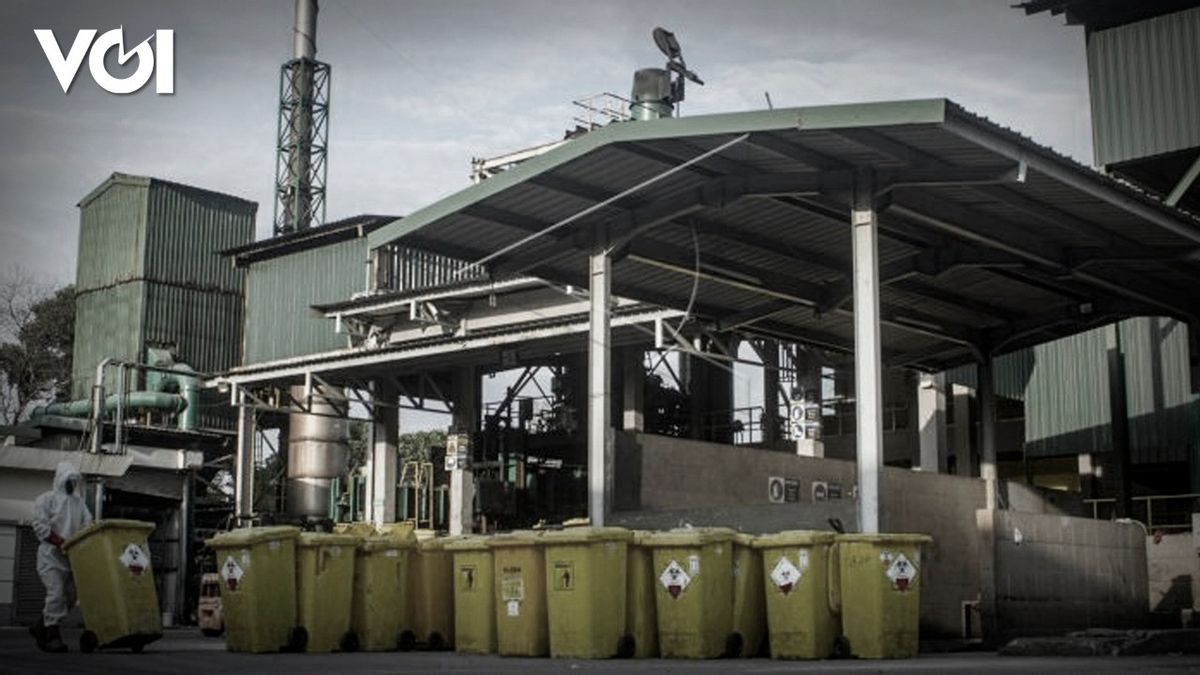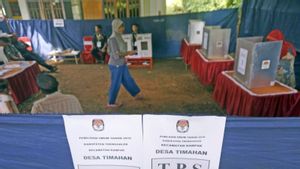
From upstream, we have seen the chaos of the process of collecting medical waste from household waste. Still part of VOI's distinctive Writing Series, "Critical Medical Waste", let's take a look at how medical waste is treated downstream.
The amount of infectious medical waste has been mounting during the COVID-19 pandemic. The case of indiscriminate waste disposal that we often encounter recently, is like the iceberg phenomenon. This is because in addition to chaotic management, inadequate waste processing capacity is a major hurdle in the flow of infectious waste management. A breakthrough is needed to find a way out.
In the past, most of the medical waste was in the form of drug packs and contraceptives, now "black trash" is more diverse. Medical waste is dominated by masks, face shields, medical gloves, and hazmat from handling COVID-19. To avoid disease, the waste should be treated in such a way.
But unfortunately, the amount of medical waste that explodes every day is not matched by adequate waste processing or disposal facilities. According to data from the Ministry of Health (Kemenkes) in 2019, from the total number of hospitals (RS) in Indonesia of 2,877, only 117 hospitals have permission to manage hazardous and toxic waste (B3).
Not to mention that in Indonesia there are only two ways to treat medical waste, namely by incineration and autoclaving. Of the 117 hospitals, 111 hospitals used the incineration technique and the rest were autoclaved. Let's do both surgery.
First, inceniration. This waste treatment method relies on a waste combustion process that involves burning organic matter. The products of incineration are ash, residual gases from combustion, particulates, and heat.
The resulting gas contains pollutants, therefore it must be cleaned before being released. Meanwhile, the resulting heat can be used as an energy source. In addition, with inceneration, waste volume can be reduced by 97 percent and waste weight by up to 70 percent.
However, inceneration has its drawbacks. The use of an incinerator requires a large area. Land difficulties are also an obstacle for Health Service Facilities. Not to mention if there is rejection from local residents who are worried that the results of the burning will affect health.
Second, the autoclave method. Autoclave itself is a closed heating device that is used to sterilize an object using steam at high temperature and pressure for about 15 minutes. Autoclaving is intended to kill endospores, which are resistant cells produced by bacteria, resistant to heating, drought, and antibiotics.
For medical waste processing, the autoclave is also equipped with a chopper. The disadvantage of autoclaving is that it requires manual heat preservation and adjustment. Such care and arrangement must be carried out during the sterilization period.
Processing of COVID-19 medical waste by inceneration and autoclaving has been regulated in a circular issued by the Minister of Environment and Forestry (LHK) Siti Nurbaya since March 2020. There are actually several other ways besides incen- sation and autoclaving.
For example, with hydrothermal technology. This method is actually similar to autoclaving, but this technology uses steam pressure to sterilize the waste. Hydrothermal also has a higher pressure.
In addition, you can also use a microwave. Sterilization in this tool is carried out at a temperature of 100 degrees Celsius for 30 minutes. Microwaving waste has the advantage that it has no emissions and is safe for disposal to the next disposal site.
A study conducted by Chinese industrial technology researcher Yu Hao and fellow researchers in Norway recommends the temporary storage of solid waste from health-care facilities in transit places before being transported to final sites during the outbreak.
In addition, research from Public Health England also suggests that not to pollute the environment and reduce sources of disease, medical waste should be stored for 72 hours before transportation. This is done with the hope that the virus will die when it is brought to the final handling facility.

With the various technologies described above, medical or B3 waste should not be contaminated. However, several problems in Indonesia make waste management very difficult. One of them is the provision of tools for which these tools must meet the requirements.
"First, it requires sophisticated equipment, namely incineration, which also has conditions, such as being able to burn above 800 degrees Celsius or above 1000 degrees Celsius to carry out the process. Not all health facilities have sufficient budget for that, so it's still a little bit," said the Institute Researcher. Indonesian Science (LIPI) Muhammad Reza Cordova to VOI.
B3 medical waste processing is not an easy matter. Therefore, the number of medical waste treatment facilities is still difficult. The number of medical management services is also still limited. In addition, existing management services must meet applicable standards and regulations.
Actually, if Indonesia can manage medical waste properly, Indonesia will be able to produce something of economic value from this waste treatment. For example, if you use an incinerator, the heat from combustion can be used as an energy source. Take the example of other countries such as Sweden or Finland, for example, which utilize processed waste into renewable energy for electricity and water.

Indonesia is not the only country facing the problem of medical waste. As of the March 2020 report, more than 20 cities across mainland China have been inundated with medical waste, with Wuhan, the epicenter of the COVID-19 outbreak, generating up to six times more medical waste than normal.
Citing SCMP, medical waste treatment facilities in 28 cities in China have experienced a burden. Hospitals in Wuhan even produced more than 240 tonnes of medical waste every day during the peak of the outbreak, compared to 40 tonnes before COVID-19 occurred, said Zhao Qunying, head of the ministry's emergency office.
Apart from that, India also faces the same problem. Based on data shared by the Central Pollution Control Board and the pollution control boards of the states of Delhi, Haryana, Uttar Pradesh (UP) and Rajasthan, Delhi has the highest dailies of biomedical waste.
"Of course, hospitals are a major producer due to the increasing number of COVID-19 cases, but there are also many positive cases of COVID-19 that have been quarantined at home," said Delhi-based waste management expert Swati Singh Sambyal.
The government has anticipated this waste by requiring people to submit COVID-19 waste in a yellow bag which will be collected and processed according to the guidelines. However, most households mix medical waste with other waste. So, not only COVID-19 waste but also household waste is in that special yellow bag. Household waste is carried to the bio-medical waste treatment plant. Experts believe that there is no sorting of waste at its source due to a lack of awareness.
Meanwhile in the UK, sewage treatment services were interrupted during the lockdown. To quote Science Magazine, this led to an increase in waste management errors by 300 percent in some communities. With fewer options available, traditional waste management practices such as landfills and incinerators replace more sustainable measures such as recycling, which have detrimental effects on the environment.
The UK Environment Agency then permitted the temporary storage of waste and burning ash on sites that had not yet been granted permission. The expanding kuncitara also led to a substantial increase in domestic waste in the United Kingdom.
Follow This Issue Series Writing: Critical Medical Waste
The English, Chinese, Japanese, Arabic, and French versions are automatically generated by the AI. So there may still be inaccuracies in translating, please always see Indonesian as our main language. (system supported by DigitalSiber.id)












